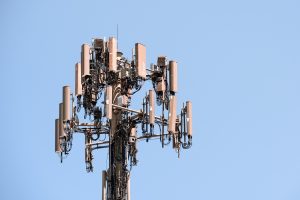The popularity of cellular IoT technology shows no signs of slowing down. Organizations benefiting from cellular IoT span various industries including healthcare, manufacturing, agriculture, and more.
In fact, Ericsson forecasts roughly 5 billion cellular IoT connections by 2025, with estimates that the value of the global cellular IoT market will exceed $61 billion by 2026.
But what is cellular IoT? And what are some of the building blocks of a cellular IoT suite? We’re here to clear that up.
Read on as shed light on cellular modems, routers and gateways for you to better understand device functionality and build a better IoT solution for your specific needs.
Sign up for our monthly newsletter for the latest in cellular IoT technology, use cases and regulatory framework updates.

What is cellular IoT?
Choosing the best connectivity method should depend on factors that are use case specific. The common parameters to consider include cost, reliability and security and coverage.
Cellular IoT connects smart objects by piggybacking on well-established telecommunications networks that facilitate data transfers between sensors, actuators, gateways, etc. The technology saves costs by eliminating the need to invest in or build new network infrastructure.
Better yet, with the roll out of 5G networks, there are different bandwidth solutions that cater to your specific needs. 5G reduced capacity for example, will cater to the mass deployment of IoT devices in hard-to-reach areas that require long battery life and low latency.
Cellular modems, routers and gateways
Although cellular IoT needs no additional investment of infrastructure, there are still other considerations when it comes to building your ideal IoT suite.
With all kinds of equipment available, from cellular modems, routers and gateways, it can become very confusing, very quickly.
Clarifying the differences between them will help you to clearly understand the device functionality of each piece of equipment and when to choose which.

Cellular modems
A cellular modem is not intelligent or programmable. It simply enables 2G/3G/4G/5G network connectivity across a broad range of smart devices and applications.
With the help of a SIM, cellular modems save us from the limitations and restrictions of other connectivity types such as LAN/ethernet and Wi-Fi. It provides internet connectivity via serial port to end or edge devices such as meters, vending machines, trackers, and more. Simply sending traffic from one point to another.
The disadvantage of a modem is that it doesn’t usually come with enhanced cybersecurity features. You will have to consider purchasing or installing additional features that provide data protection and include a firewall function.
Use case: Essentially, cellular modems help transmit connectivity from the network to device. But with mass deployments such as in agriculture, greenhouses and fields could be fitted with hundreds, if not thousands of deployed devices. This is where a cellular router comes in handy.

Cellular routers
A cellular router is usually a highly intelligent device. In fact, nowadays, most cellular routers contain a modem.
Routers offer more robust features such as ethernet, Wi-Fi, serial ports, VPN security, dynamic routing, and more, to provide reliable, continuous connectivity between the user and all the smart devices equipped with a SIM.
Cellular routers also provide firewalls to handle packet-level traffic inspection and reconciling incoming traffic with outgoing requests. It should also support different tunnel options for data security such as IPsec, OpenVPN, L2TP, and more.
Of course, not all routers are built the same. Ensure that you are investing in one with higher levels of security to avoid a costly breach. Your router should at least offer WPA or WPA 2 password protection.
Use case: Building on the same agricultural use case, a farmer may have thousands of devices monitoring temperature and weather conditions in the field. A cellular router shares network connectivity from the modem to all the deployed smart devices. This allows the farmer to benefit from real-time, granular insights, management, and control to ensure conditions remain within ideal parameters.

Cellular gateways
A cellular gateway typically acts as a translator for field devices, from one protocol to another. This translation is vital for transmitting the data between two systems with different communication protocols, data formats or languages, or even completely different architectures.
For example, a gateway could gather data from the field devices via different protocols and convert that data into IP protocol and send it via the network.
The gateway provides business with a complete solution, from data collection from devices to the cloud for further analysis.
There are 3 broad categories of gateways:
- Entry-level IoT gateways: These gateways have limited processing capabilities. They simply provide a path to transfer data and translate protocols between end devices and the cloud.
- Intermediate IoT gateways: These gateways, along with the basic functionalities, provide data processing and filtering functions. They may also perform real-time data analysis and provide alerts, along with additional hardware security and local data storage options based on the use cases.
- Advanced IoT gateways: These are the most sophisticated and include characteristics such as machine learning, data analysis, and real-time decision-making. This category includes gateways operating on a high-performant processor, along with an AI chipset.
Use cases: Many cellular gateways used in mass deployments across industrial, construction or manufacturing settings. With protocol translation in a gateway, the I/O interface is vital to convert data from python to another protocol that can works with an IoT cloud like Azure or AWS.
Summary
In cellular IoT, a modem simply connects a device to a network, and usually has AT commands feature. A router has more advanced networking functionality and data security compared to a modem. Finally, a gateway is the most sophisticated of all three by converting data from one protocol to another.
There’s a reason adoption of cellular connectivity in IoT is accelerating. It’s simple to use (i.e., plug-and-play), boasts strong coverage, has high data throughput, excellent bandwidth, and cutting-edge security.
With award-winning secure coverage across 650 networks in 190+ countries, our cellular connectivity also encompasses a range of specialized and customizable solutions for different use cases.
Contact one of our industry experts today and together with our ecosystem partners, we can help you create an ideal solution for all your current and evolving IoT connectivity needs. Alternatively, click here to read more about all our innovative connectivity solutions.











